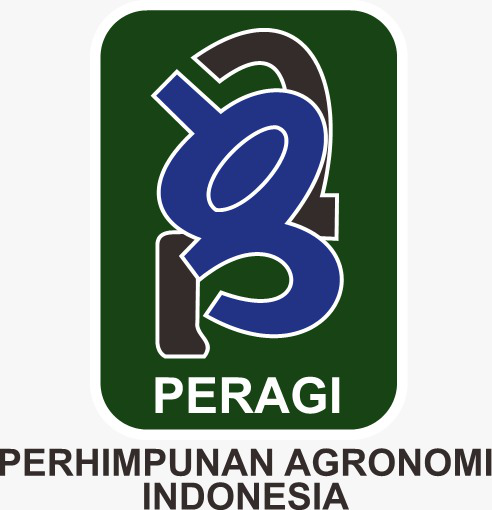Optimizing Red Spinach (Amaranthus tricolor) Growth and Yield by Applying Organic and Inorganic Fertilizers
Abstract
The Red Spinach (Amaranthus tricolor) is a leafy vegetable plant admired for its vibrant red leaves and is commonly used in cooking for its visual appeal and rich nutritional value. This plant is popular in many parts of the world because it can thrive in different soil and climate conditions. This study aims to enhance the growth and productivity of Red Spinach (Amaranthus tricolor) plants through a mix of organic and inorganic fertilizers. The approach utilized in the study was a factorial Randomized Block Design (RAK) with two primary factors: factor K, which represents organic fertilizer from cow dung, and factor P, which represents inorganic fertilizer NPK Mutiara 16:16:16. Each factor is subjected to three treatment levels, with three replications conducted to ensure the validity of the research results. The research findings indicated no significant distinction between the two treatments, whether using organic fertilizer (K factor) or inorganic fertilizer (P factor). This result indicates that using a combination of cow dung organic fertilizer and inorganic NPK fertilizer does not significantly affect the growth and yield of Red Spinach plants. In summary, the utilization of both organic fertilizer from cow dung and inorganic fertilizer NPK Mutiara 16:16:16 in this research did not result in a significant variation in the growth and yield of Red Spinach. Therefore, future research could explore other factors influencing crop yields, such as the interaction between soil type and specific environmental conditions, to obtain a more effective fertilization strategyDownloads
References
Andriani Luta, D., Siregar, M., Sabrina, T., & Syawal Harahap, F. (2020). Peran Aplikasi Pembenah Tanah Terhadap Sifat Kimia Tanah Pada Tanaman Bawang Merah. Jurnal Tanah Dan Sumberdaya Lahan, 7(1), 121–125. https://doi.org/10.21776/ub.jtsl.2020.007.1.15
Angkur, E., Mahardika, I. B. K., & Sudewa, I. K. A. (2021). Pengaruh Pupuk Kandang Sapi, NPK Mutiara Terhadap Tanaman Kacang Panjang (Vigna sinensis L.). Gema Agro, 26(1), 56–65. http://dx.doi.org/10.22225/ga.26.1.3276.56-65.
Kharolina, K., Mustikarini, E. D., & Pratama, D. (2023). Potensi Hasil Berbagai Varietas Unggul Bawang Merah Di Lahan Ultisol Kabupaten Bangka. Jurnal Tanah Dan Sumberdaya Lahan, 10(2), 215–222. https://doi.org/10.21776/ub.jtsl.2023.010.2.4
Kustiawan, N., Maizar, M., Salman, S., & Riswandi, R. (2024). Applying Rice Washing Water and Organic NPK To Increase Caisim Mustard Plant (Brassica juncea L) Growth and Production. Jurnal Agronomi Tanaman Tropika (Juatika), 6(1), 101–115. https://doi.org/10.36378/juatika.v6i1.3400
Lubis, N., Refnizuida, R., & R, H. I. F. (2019). Pengaruh Pemberian Pupuk Organik Daun Kelor Dan Pupuk Kotoran Puyuh Terhadap Pertumbuhan Dan Produksi Tanaman Kacang Panjang (Vigna Cylindrica L). Talenta Conference Series: Science and Technology (ST), 2(1), 108–117. https://doi.org/10.32734/st.v2i1.327
Parasmita, B., Anjani, T., & Santoso, B. B. (2022). Pertumbuhan Dan Hasil Sawi Pakcoy ( Brassica rapa L .) Sistem Tanam Wadah Pada Berbagai Dosis Pupuk Kascing Growth And Yield Of Mustard Pakcoy ( Brassica rapa L .) With Container Planting System At Various Doses Of Vermicompost. 1(1), 1–9.
Pertami, R. R. D., Eliyatiningsih, E., Salim, A., & Basuki, B. (2022). Optimization of Land Use Based on Land Suitability Class for the Development of Red Chillies in Jember Regency. Jurnal Tanah Dan Sumberdaya Lahan, 9(1), 163–170. https://doi.org/10.21776/ub.jtsl.2022.009.1.18
Putri, E. E., Pasangka, B., & Louk, A. C. (2024). Pemuliaan Tanaman Bayam Lokal Timor dengan Metode Radiasi Multigamma Standar. 4(1), 301–307.
Raja, A., Beja, H. D., & Jeksen, J. (2021). PENGARUH PEMBERIAN PUPUK KANDANG AYAM TERHADAP PERTUMBUHAN DAN HASIL TANAMAN BAYAM MERAH (Amaranthus tricolor L.). AGROVITAL : Jurnal Ilmu Pertanian, 6(1), 47. https://doi.org/10.35329/agrovital.v6i1.2034
Raksun, A., Japa, L., & Mertha, I. G. (2019). Aplikasi Pupuk Organik Dan Npk Untuk Meningkatkan Pertumbuhan Vegetatif Melon (Cucumis melo L.). Jurnal Biologi Tropis, 19(1), 19–24. https://doi.org/10.29303/jbt.v19i1.1003
Sholihah, A., & Sugianto, A. (2023). “Akselerasi Hasil Penelitian dan Optimalisasi Tata Ruang Agraria untuk Mewujudkan Pertanian Berkelanjutan” Pertumbuhan, Hasil dan Kandungan Vitamin C Tanaman Bayam Merah Akibat Pemberian Pupuk Organik Cair Urine Kelinci. 7(1), p-ISSN.
Steven cipta putra. (2022). Fakultas pertanian universitas islam riau pekanbaru 2022. Pengaruh Aplikasi Kompos Limbah Akasia Dan Pupuk NPK 16:16:16 Terhadap Pertumbuhan Serta Hasil Tanaman Tomat (Solanum Lycopersicum L.), Fakultas Pertanian Universitas Riau Pekanbaru, 14.
Wisnubroto, M. P., Putra, E. T. S., & Kurniasih, B. (2024). Biochemical and Agronomic Responses of Soybean (Glycine max L. Merrill) to Spent and Deoiled Bleaching Earth of NPK Fertilization on Filler Basis. Pertanika Journal of Science and Technology, 32(2), 703–723. https://doi.org/10.47836/pjst.32.2.12
Xie, D., & Yan, W. (2023). A study of N = 1 SCFT derived from N = 2 SCFT: index and chiral ring. Journal of High Energy Physics, 2023(3), 1–5. https://doi.org/10.1007/JHEP03(2023)201
Zega, R., Sembiring, R., & Sinaga, R. (2023). Perkembangan Tanaman Bayam Merah ( Amaranthus Tricolor ) Application of Poc Fermented From Banana Fruit Skins Its Effect on Plant Ttgrowth and Development Red Spinach ( Amaranthus Tricolor ). 1–16.
Copyright (c) 2024 Lisa Aulia Rambe, Widya Lestari, Yudi Triyanto, Yusmaidar Sepriani

This work is licensed under a Creative Commons Attribution 4.0 International License.
Authors who publish with Jurnal Agronomi Tanaman Tropika (JUATIKA) agree to the following terms:
Authors retain copyright and grant the Jurnal Agronomi Tanaman Tropika (JUATIKA) right of first publication with the work simultaneously licensed under a Creative Commons Attribution License (CC BY 4.0) that allows others to share (copy and redistribute the material in any medium or format) and adapt (remix, transform, and build upon the material for any purpose, even commercially) with an acknowledgment of the work's authorship and initial publication in Jurnal Agronomi Tanaman Tropika (JUATIKA).
Authors are able to enter into separate, additional contractual arrangements for the non-exclusive distribution of the journal's published version of the work (e.g., post it to an institutional repository or publish it in a book), with an acknowledgment of its initial publication in Jurnal Agronomi Tanaman Tropika (JUATIKA). Authors are permitted and encouraged to post their work online (e.g., in institutional repositories or on their website) prior to and during the submission process, as it can lead to productive exchanges, as well as earlier and greater citation of published work.







 More Information
More Information



